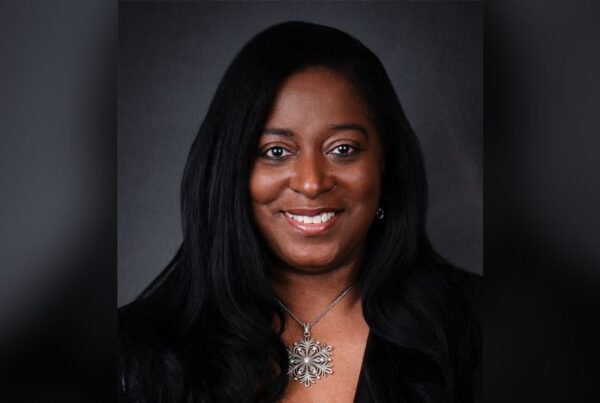
Evans, whose time in the product recall space started with AIG in 1999 before it took him to Catlin and Talbot Underwriting, had just stepped down from the latter to relocate to France with his family when his former AIG colleague and CEO of NuVenture Andy Colbran reached out. Early in the discussion, Evans noted that he was quite clear he didn’t particularly want to get involved with an MGA after spending so long working with large corporate entities.
However, as the discussion wore on, he said, he quickly realised that what he wanted most of all was a role that allowed him to focus on what he’s best at – underwriting and building a book of business. Whether it’s with a small or a large team, that underwriting piece is what interests him and so the proposition of the MGA route became very attractive.
“And having been in the market for so long,” he said, “and having built [such strong market] relationships definitely helped in taking the business plan from a Word document into the reality of having carriers saying, ‘we’ll back you’, because of my reputation in the market. So, that has been really good.”
Evans soon found that building an MGA from the ground up is a very different matter to building out a product offering within a large corporation like Talbot or Catlin. With so many considerations to keep in mind, he said, he has been very grateful for the expertise of NuVenture and the support of its legal, data and actuarial teams who have made bringing BluNiche to life possible.
Read more: NuVenture launches new managing general agent
“It’s interesting because the bit that attracted me to NuVenture was the tech side of it,” he said when touching on how BluNiche will differentiate itself from other market offerings. “The brokers that bring us the submissions will see that we should be able to service risks very quickly, as the tech we have in-house will mean we have to do far less admin and we can focus far more time on underwriting.”
Product recall insurance has traditionally had a very slow quote or feedback turnaround compared with other business lines such as terrorism insurance. So, he said, having an admin system that reduces the team’s workload even on simple tasks such as removing the need to rekey core data into multiple systems, is going to make a substantial difference. And as BluNiche expands across the market, it will generate substantial, high-quality data to translate into actionable insights on what’s working and what isn’t – and will be in a position to relay this feedback to the carriers.
The product recall space has come under increasing scrutiny in recent years, led in no small part by the media attention around manufacturing errors. On the insurance side of the equation, Evans has also seen growing attention to and understanding of the market.
“I can remember the days when I first started in AIG on product recall and the brokers would want underwriters to go with them to meet clients to explain the coverage because some of the brokers didn’t really understand the detail of the policy coverage,” he said. “But skip to where we are now and brokers are far more knowledgeable than they were 20 years ago and are key to driving the business and its growth.
“We 100% rely on the brokers to bring their submissions in and many of these guys have specialist recall teams, just solely focusing on this. Aon, WTW, Marsh, Lockton, and Howden all have teams just focused solely on product recall. So, it’s a combination of those guys stepping up and really expanding their expertise, with the underwriting side developing and growing at the same time. At the time I started at Catlin, in London there were four or five markets writing product recall and you look now and there are 10 or 12 markets, so you can see how it has developed in that period.”
Read more: What are the current trends in product recall in the automotive space?
It’s a market full of both challenges and opportunities, Evans said, and one of the biggest challenges the product recall space continues to face is self-insurance. There’s a perception among some clients that product recall is covered under the casualty section of their coverage, which it isn’t. That coverage protects them from a liability standpoint but it doesn’t reimburse them for the often significant losses involved in handling the recall.
Raising awareness of what product recall insurance is and how it can protect a business is a key priority for Evans and the BluNiche team, and he highlighted that while the market is experiencing some growing pains, they are a result of the growth that’s happening. Touching on the new MGA’s key ambitions, he emphasised that BluNiche is not coming into the market to be a disruptor but rather to become a respected pillar of this established market.
“I want to be doing this in 10 years’ time,” he said. “And the only way I do that is by maintaining a profitable book and the backing of carriers. Without the carriers, I can’t do anything. For me, it’s not about changing what I’ve done over the last 20 years but focusing solely on the underwriting side rather than having to worry about corporate pressures. […] And a lot of this is going to be me relying on my reputation of being consistent and being fair to brokers and clients.”
It can be tempting to think of BluNiche’s launch as a finish-line of sorts but really it’s just the starting line, he said, and the real hard work begins now. The MGA has received Lloyd’s approval but there’s still internal work to be done. For now, BluNiche is squarely in position to start communicating its proposition to brokers, and he’s looking forward to digging into those conversations.
As for what a great first year looks like, Evans highlighted that BluNiche has certain financial targets it’s looking to hit but its real metric of success is overall profitability.
“Because without that profitability, we’re not going to have the support of carriers,” he said. “So, if we can write enough risks that we feel we’ve done well, and it’s profitable, then I’m going to be happy.”




